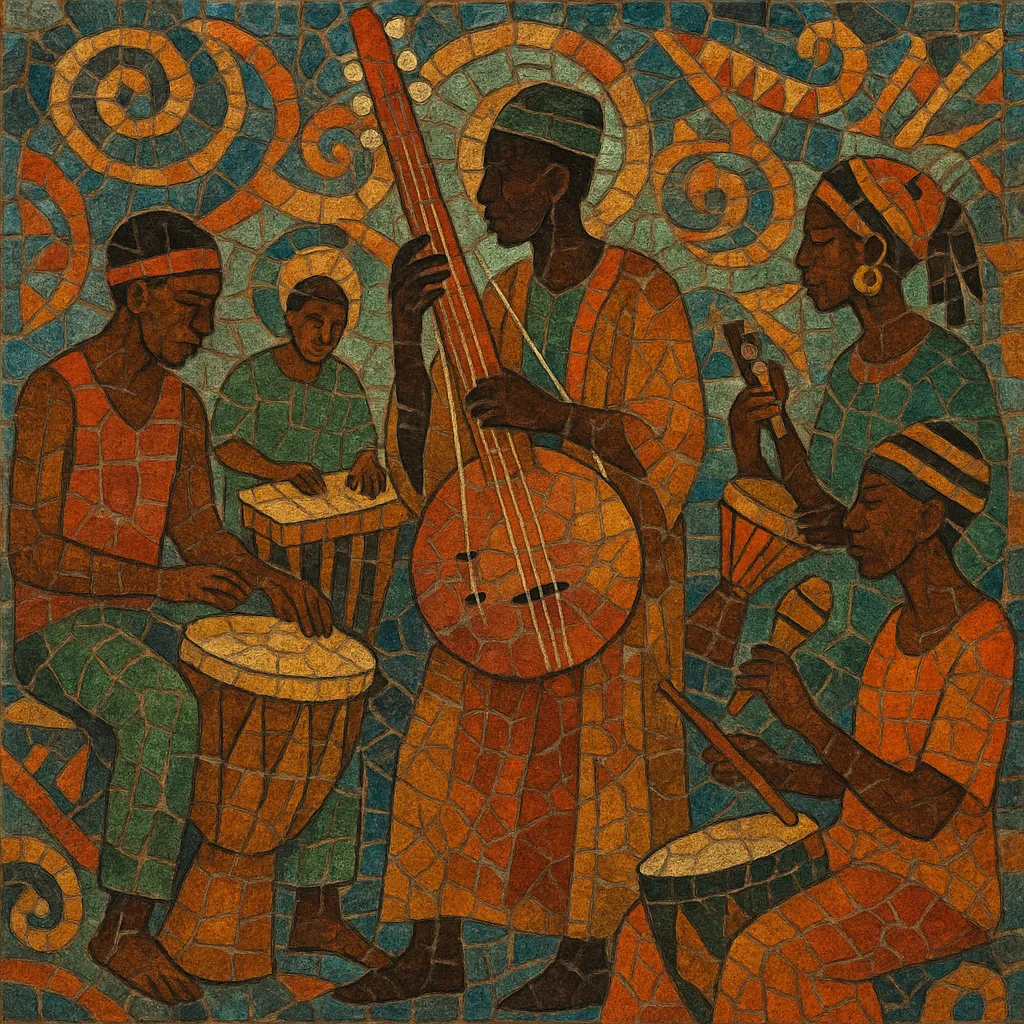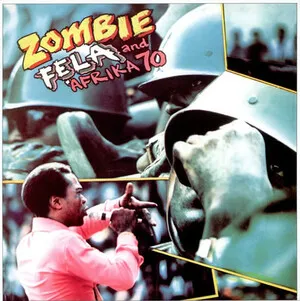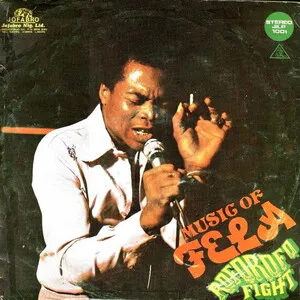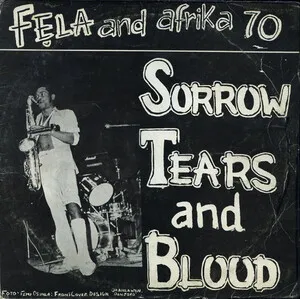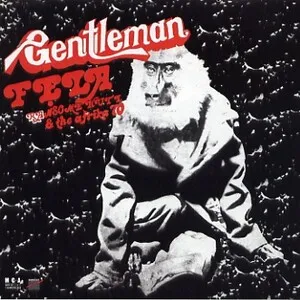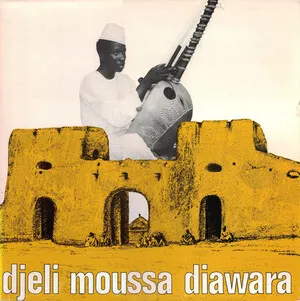West African music refers to the interrelated musical traditions of the western Sahel and coastal regions, stretching from Senegal and Mali through Ghana, Nigeria, Benin, and beyond. It is defined by layered polyrhythms, call-and-response vocals, and a powerful dance focus that binds music to social life, ritual, and storytelling.
Core timbres come from iconic instruments such as the kora (21‑string harp), ngoni/xalam (lute), balafon (wooden keyed xylophone), the djembe and dunun (drum ensemble), talking drum (dùndún/tama), shekere, and bells guiding timeline patterns. Many repertoires are carried by griots (jeli/jali) who function as historians, praise‑singers, and genealogists, while Islamic chant and Sahelian trade routes added modal and melismatic flavors. Melodies often center on pentatonic or heptatonic modes, with cyclical ostinati supporting improvisation and collective participation.
The musical backbone of West Africa formed around courtly and communal traditions linked to empires such as Mali, Songhai, and Ashanti. Hereditary griot (jeli/jali) lineages maintained epics (e.g., the Sunjata cycle), praise poetry, and genealogies, accompanied by kora, ngoni, and balafon. Drumming ensembles developed interlocking parts and bell-guided timeline patterns, anchoring dance and social ceremony.
From the medieval period onward, trans-Saharan trade and Islam introduced Qur’anic recitation aesthetics and modal concepts to Sahelian belts, enriching vocal ornamentation and scalar thinking. Court and devotional contexts fused indigenous polyrhythm with Islamic vocal finesse.
European contact and mission schools brought new instruments (guitars, brass, harmoniums) and venues. Port cities along the Gulf of Guinea became hubs where local rhythms interfaced with Afro‑diasporic and European styles. Palm‑wine guitar idioms, brass band traditions, and dance‑band hybrids germinated in coastal towns.
New nations amplified local sounds on radio and in state ensembles. Highlife flourished in Ghana; jùjú and apala evolved in Nigeria; mbalax surged in Senegal; and Afrobeat—Fela Kuti’s synthesis of Yoruba rhythm, jazz harmony, and political fire—became globally emblematic. Recording infrastructure, touring circuits, and urban dance halls spread these styles across Africa and into the diaspora.
West African music’s fingerprints appear in blues, jazz, gospel, and contemporary pop via shared rhythmic and call‑and‑response logics. Today, artists blend kora, ngoni, and talking drum with electric guitars, synthesizers, and DAWs. Modern currents like hiplife, azonto, and afrobeats maintain the foundational groove logic while embracing global production, streaming culture, and cross‑continental collaborations.
Start with a cyclical groove built on interlocking parts. Use a bell or shaker timeline (12/8 standard pattern or 4/4 clave‑like figure) to anchor polyrhythms. Layer contrasting rhythms that interlock rather than duplicate, leaving space for call‑and‑response.
• Drums/percussion: djembe, dunun (kenkeni/sangban/dununba), talking drum (dùndún/tama), shekere, bells.
• Strings/keys: kora, ngoni/xalam, balafon; optionally guitar or keys doubling ostinati.
• Voice: lead singer (often a praise‑singer) plus chorus for call‑and‑response refrains.
• Establish a timeline pattern first; add bass (ngoni/guitar) repeating ostinato.
• Introduce drum ensemble parts that weave around the bell. Use breaks and signals to cue sections and dance changes.
• Structure pieces in cycles: intro call, chorus refrain, solo/improvisation, praise section, return to refrain, ending break.
• Favor pentatonic or heptatonic modes. Keep harmony sparse—drones, pedal tones, or two‑chord vamps are common.
• Emphasize melodic variation over vertical chord changes. Ornament with slides, mordents, and melisma, mirroring griot vocal style.
• Center on praise, history, social commentary, or proverbs. Employ call‑and‑response between lead and chorus.
• Maintain a speech‑song continuum, aligning phrasing with language tone and drum accents.
• Prioritize groove cohesion: record bell and shaker first, then rhythm section.
• Pan interlocking parts to enhance stereo conversation. Use minimal compression to keep drum transients lively.
• For contemporary fusions, layer kora/balafon ostinati with subtle synth pads and a restrained kick to preserve the acoustic pulse.

